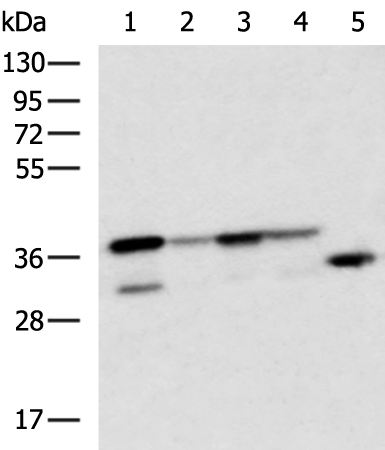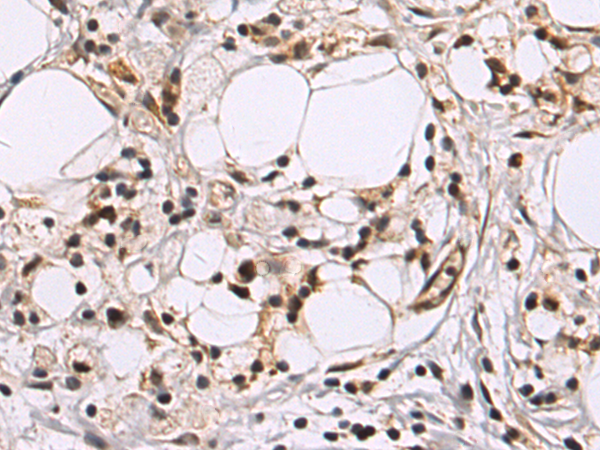


| WB | 咨询技术 | Human,Monkey |
| IF | 咨询技术 | Human,Monkey |
| IHC | 咨询技术 | Human,Monkey |
| ICC | 1/200 - 1/1000 | Human,Monkey |
| FCM | 1/200 - 1/400 | Human,Monkey |
| Elisa | 1/10000 | Human,Monkey |
| Aliases | p30; PRR6; CENP-V; 3110013H01Rik |
| WB Predicted band size | 30 kDa |
| Host/Isotype | Rabbit IgG |
| Antibody Type | Primary antibody |
| Storage | Store at 4°C short term. Aliquot and store at -20°C long term. Avoid freeze/thaw cycles. |
| Species Reactivity | Human, Mouse |
| Immunogen | Synthetic peptide of human CENPV |
| Formulation | Purified antibody in PBS with 0.05% sodium azide and 50% glycerol. |
+ +
以下是关于MIB1抗体的3篇参考文献及其摘要概括:
---
1. **Cattoretti, G., et al. (1992).**
*"Monoclonal antibodies against recombinant parts of the Ki-67 antigen (MIB 1 and MIB 3) detect proliferating cells in microwave-processed formalin-fixed paraffin sections."*
**摘要**:该研究首次报道了MIB1抗体的开发,解决了传统Ki-67抗体仅适用于冷冻组织的问题。通过微波抗原修复技术,MIB1可在福尔马林固定、石蜡包埋的组织中检测细胞增殖标记,极大扩展了其在临床病理学中的应用。
2. **Scholzen, T., & Gerdes, J. (2000).**
*"The Ki-67 protein: From the known and the unknown."*
**摘要**:这篇综述系统总结了Ki-67蛋白的生物学功能及其作为细胞增殖标志物的应用,重点讨论了MIB1抗体在肿瘤诊断和预后评估中的作用,同时提出了Ki-67在细胞周期调控中尚未明确的机制。
3. **Brown, D.C., & Gatter, K.C. (1990).**
*"Monoclonal antibody Ki-67: its use in histopathology."*
**摘要**:早期研究探讨了Ki-67抗体(包括MIB1克隆)在组织病理学中的价值,验证了其在多种肿瘤中标记增殖细胞的可靠性,并强调了其在评估肿瘤恶性程度和患者预后中的潜力。
---
**备注**:MIB1是Ki-67抗原的一种单克隆抗体,广泛应用于癌症研究和诊断中。上述文献涵盖其技术开发、机制综述及临床应用,可作为关键参考资料。如需更多文献,建议通过PubMed或Web of Science以“MIB1 antibody”或“Ki-67 immunohistochemistry”为关键词进一步检索。
×